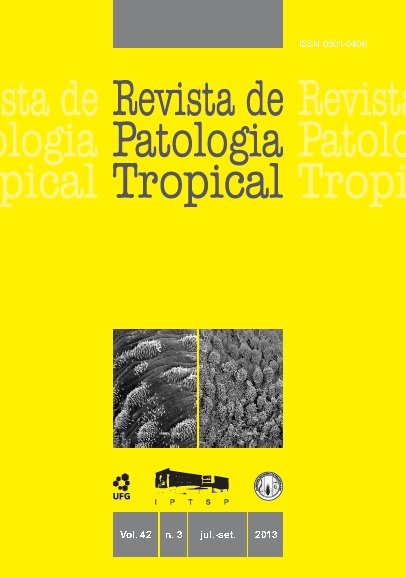CLASSIFICATION OF ADHERENCE ABILITY OF CLINICAL ISOLATES OF Candida SPP IN DIFFERENT PATTERNS OF CELL ARRANGEMENTS
DOI:
https://doi.org/10.5216/rpt.v42i3.26931Keywords:
Adhesion, Candida, Virulence, Patterns of adhesionAbstract
Adhesion has been identified as a potential virulence factor for developing candidiasis, since it is a primary mechanism of infection, especially in immunocompromised patients. The present study reports on an in vitro adherence assay and the establishment of patterns of adhesion of clinical isolates of Candida from many different anatomical sites, with the goal of comparing this virulence property among these isolates. Adherence ability was quantified in 118 strains of Candida. The results showed that all isolates adhered to coverslips in a species- and strain-dependent manner with C. glabrata showing the lowest and C. tropicalis the highest levels of adhesion. From 93 (79%) isolates with the ability to adhere, 51 (43.3%) showed weak adherence, 25 (21.2%) moderate adherence and 17 (14.4%), a strong adherence ability. Among the strains with the ability to adhere, 44 (47.31%) presented a pattern of localized adherence, 24 (25.8%) showed an aggregative pattern and only 9 (9.7%) had a pseudo-hyphal type. It was found that non C. albicans strains were more adherent than isolates of C. albicans, suggesting higher expression of this property in those species.Downloads
Downloads
How to Cite
Issue
Section
License
The manuscript submission must be accompanied by a letter signed by all authors stating the full name and email address, confirming that the material has not been published or is under consideration for publication elsewhere, and agreeing to transfer copyright in all media and formats for Journal of Tropical Pathology. The authors will not be paid for published articles. They are solely responsible for the content of those articles, even if the Editor holds the right to adjust them to the norms of the journal.
The reviewers will not be paid for the peer review process.

